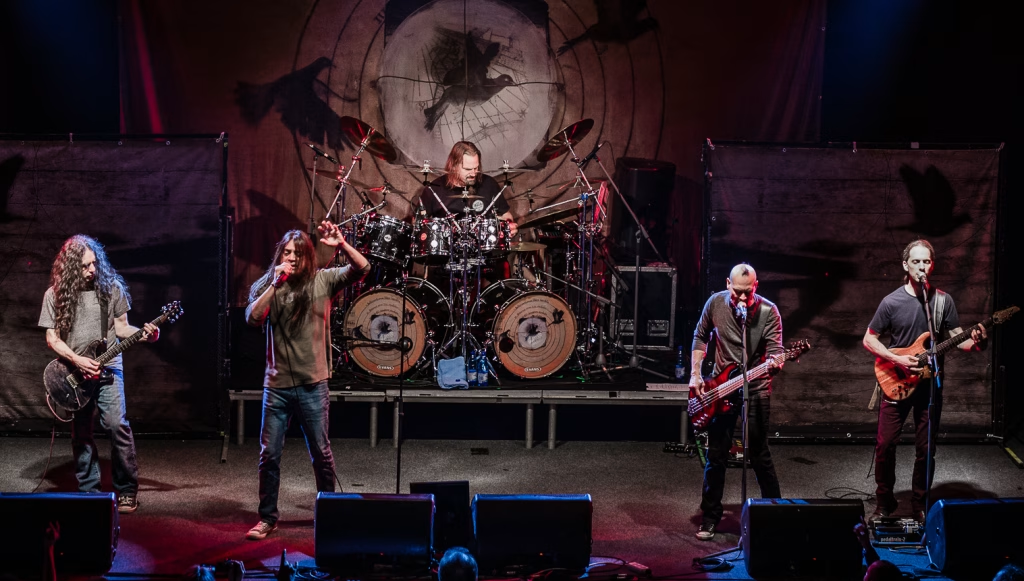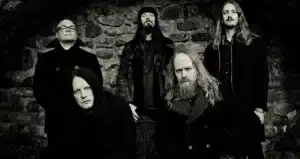Fates Warning: Architects of Progressive Metal
Fates Warning stands as one of the most foundational and innovative bands in the progressive metal genre. Formed in 1982 in Hartford, Connecticut, the band not only helped shape what would become a vital subgenre of heavy music but also remained consistently influential across four decades. Alongside contemporaries like Queensrÿche and Dream Theater, Fates Warning is often credited with laying the groundwork for progressive metal’s intricate balance of technicality, emotional depth, and conceptual storytelling.
Origins and Early Years (1982–1986)
Originally influenced by the New Wave of British Heavy Metal (NWOBHM), Fates Warning began as a traditional heavy metal band. Their debut album, Night on Bröcken (1984), featured strong Iron Maiden-inspired melodies and mystical lyrical themes. Though relatively primitive compared to their later work, the album established the band’s foundation.
With The Spectre Within (1985), Fates Warning began to hint at a more complex compositional direction. Songs like “The Apparition” and “Epitaph” showcased an evolution toward darker tones and more progressive arrangements. The band’s identity as a hybrid of heavy metal and cerebral, ambitious songwriting was beginning to take shape.

Classic Era with John Arch (1986–1987)
Their third album, Awaken the Guardian (1986), is widely regarded as one of the greatest progressive metal albums of all time. Featuring the ethereal and poetic vocals of John Arch, the album blended fantasy imagery with unusual song structures and shifting time signatures. It was also the first Fates Warning album to chart on the Billboard 200, making it a landmark moment for the band and the genre as a whole.
However, creative differences led to Arch’s departure from the band shortly after. His unique vocal phrasing and cryptic lyrics left an indelible mark on early progressive metal and remain influential to this day.
Ray Alder Era and Musical Evolution (1988–1996)
With the recruitment of vocalist Ray Alder, Fates Warning entered a new phase of maturity and musical innovation. No Exit (1988) marked a more aggressive and polished sound. The album’s centerpiece, the 22-minute “The Ivory Gate of Dreams,” cemented their reputation for conceptual and ambitious compositions.
The following albums—Perfect Symmetry (1989) and Parallels (1991)—are often considered the band’s peak in both creativity and accessibility. Perfect Symmetry introduced more jazz fusion influences and mathematical rhythms, while Parallels, produced by Terry Brown (Rush), showcased a more emotional and melodic direction. Tracks like “Eye to Eye” and “Point of View” demonstrated Alder’s dynamic vocal range and Jim Matheos’s refined guitar work.
Inside Out (1994) followed in the melodic footsteps of Parallels, but with a slightly darker tone. Although critically acclaimed, the album suffered from lack of promotional support due to label issues.
Experimental Phase and Reinvention (1997–2004)
After a brief hiatus, the band returned with A Pleasant Shade of Gray (1997), a bold and risk-laden concept album consisting of a single hour-long composition broken into 12 parts. It explored themes of alienation, emotional void, and existential despair. The album was polarizing upon release but has since become one of their most revered works.
Disconnected (2000) continued in the experimental vein, incorporating electronic elements and dissonant textures. Tracks like “One” and “Something from Nothing” explored paranoia, disconnection, and cyber-reality—subjects that felt prescient as the digital age dawned.
Later Albums and Continued Influence (2004–2020)
FWX (2004) marked a more streamlined approach, with shorter song lengths and a focus on melody. After this, the band entered a prolonged period of inactivity, during which various members pursued side projects, notably Matheos and Arch’s reunion in Arch/Matheos.
In 2013, Fates Warning made a strong return with Darkness in a Different Light, their first album in nearly a decade. The band, now a leaner unit centered around Matheos and Alder, found new strength in direct songwriting and emotionally resonant lyrics.
Theories of Flight (2016) is often considered one of their best late-period albums. It revisited their classic progressive structures while incorporating a modern production style. The album balanced heavy riffs with introspective themes, including identity, freedom, and memory.
In 2020, the band released Long Day Good Night, a sprawling 72-minute farewell of sorts. While Matheos stated that the band is not officially disbanding, the album carries the air of a summation—an epilogue to one of progressive metal’s most enduring stories.
Legacy and Influence
Fates Warning’s influence can be heard across a wide spectrum of metal and progressive acts. Bands like Dream Theater, Pain of Salvation, Symphony X, and even Tool cite them as key influences. Unlike many of their peers, Fates Warning always favored subtlety over flamboyance, emotion over excess.
Jim Matheos’s guitar style—introspective, layered, and harmonically rich—set a standard for progressive guitarists. Ray Alder’s voice brought both power and vulnerability, allowing the band to explore deeper lyrical themes.
They are also known for their sophisticated lyrical narratives, which often explore existentialism, consciousness, and the human psyche. The band’s willingness to evolve rather than conform has earned them a dedicated fanbase and critical respect that few can match.
Conclusion
Fates Warning’s journey from traditional metal roots to the forefront of progressive innovation is a testament to their creativity, resilience, and artistry. With a discography that spans emotional highs, technical peaks, and philosophical depth, they remain essential listening for anyone interested in progressive metal’s past, present, and future.





